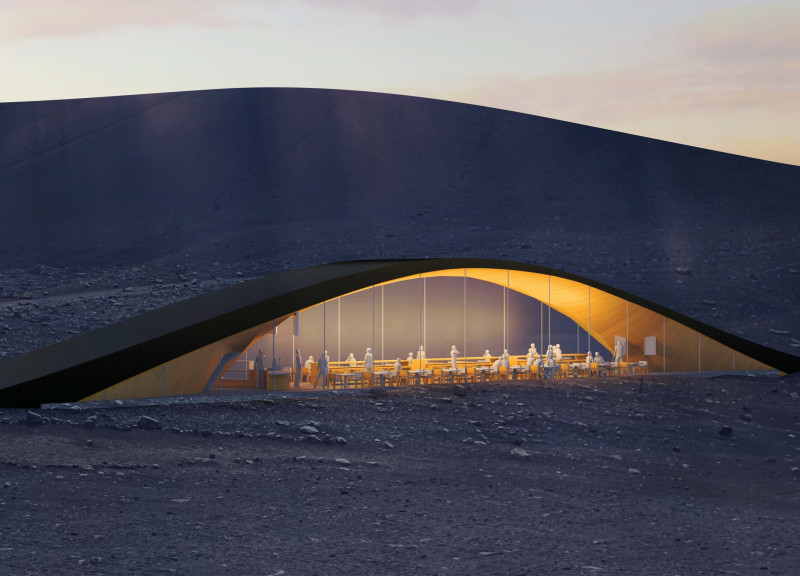5 key facts about this project
HVERFJALL CREST is located in the beautiful landscape of Iceland, designed to be a space for social interactions, learning, and a close connection with nature. The overall design concept emphasizes a thin, bridge-like structure that aims to fit naturally within the landscape, maintaining the visual appeal of the surrounding area. This design allows visitors to engage deeply with both the building and the environment around it.
Bridging Nature and Built Environment
The structure features long glass facades that provide wide views of the Icelandic scenery and allow plenty of natural light into the interior spaces, which are dedicated to coffee and sightseeing. This transparency creates an open atmosphere, enabling easy interaction between the interior and the stunning exterior landscape.
Organizational Strategy
Programs that do not rely on views are mostly placed beneath the ground, which serves many purposes. This arrangement keeps operational areas out of sight, helping to reduce visual disruption in the landscape. It also includes slight modifications to the terrain, producing gentle slopes that improve access to the spaces below. Furthermore, a resting area surrounds a fire pit, encouraging social gatherings and enhancing the overall visitor experience.
Material Use and Structural Integrity
A careful selection of materials is used, including concrete, steel, wood, and glass. The concrete forms the primary structure, providing necessary strength while aligning with the natural terrain. Steel parts support the overall framework, while wood paneling adds warmth and character to the interiors. Glass plays a key role in the facades, ensuring that the connection between the inside spaces and the inspiring Icelandic landscape is clear. Recycled concrete is used for the flooring, showcasing a commitment to sustainability, while retaining concrete walls contribute to the building's durability.
Visitors can find a cozy resting area that features a fire pit, offering a moment of peace to reflect on the natural surroundings while encouraging a sense of community. This element ties the built environment back to the landscape, promoting a balanced relationship between people and nature.






















































